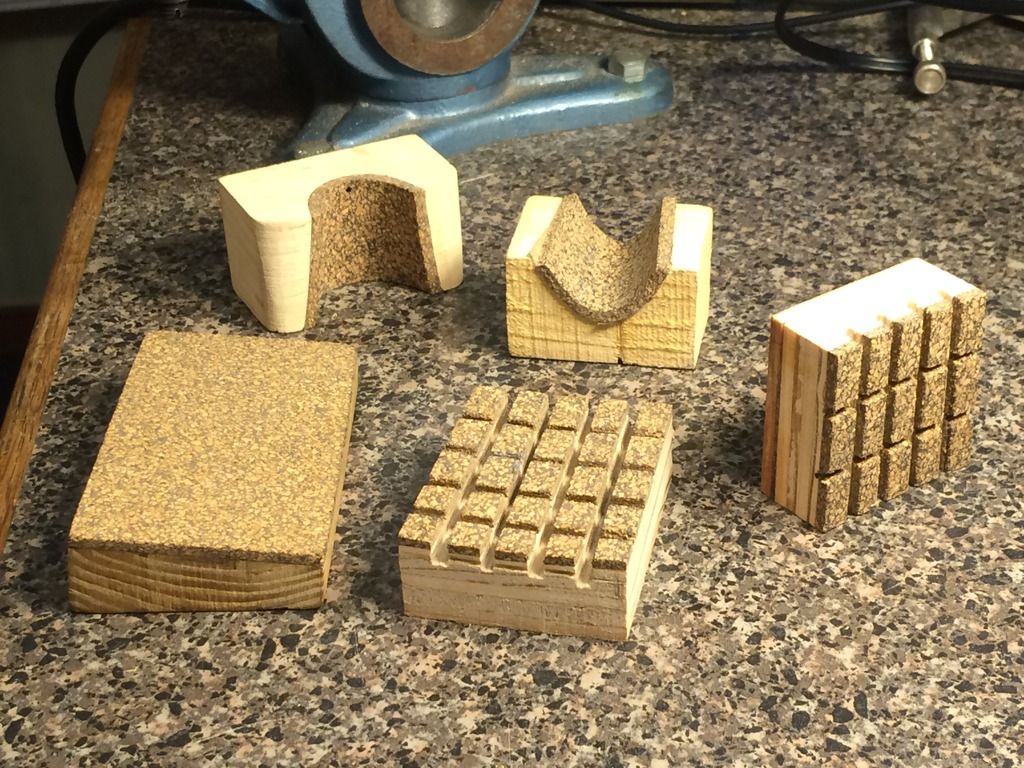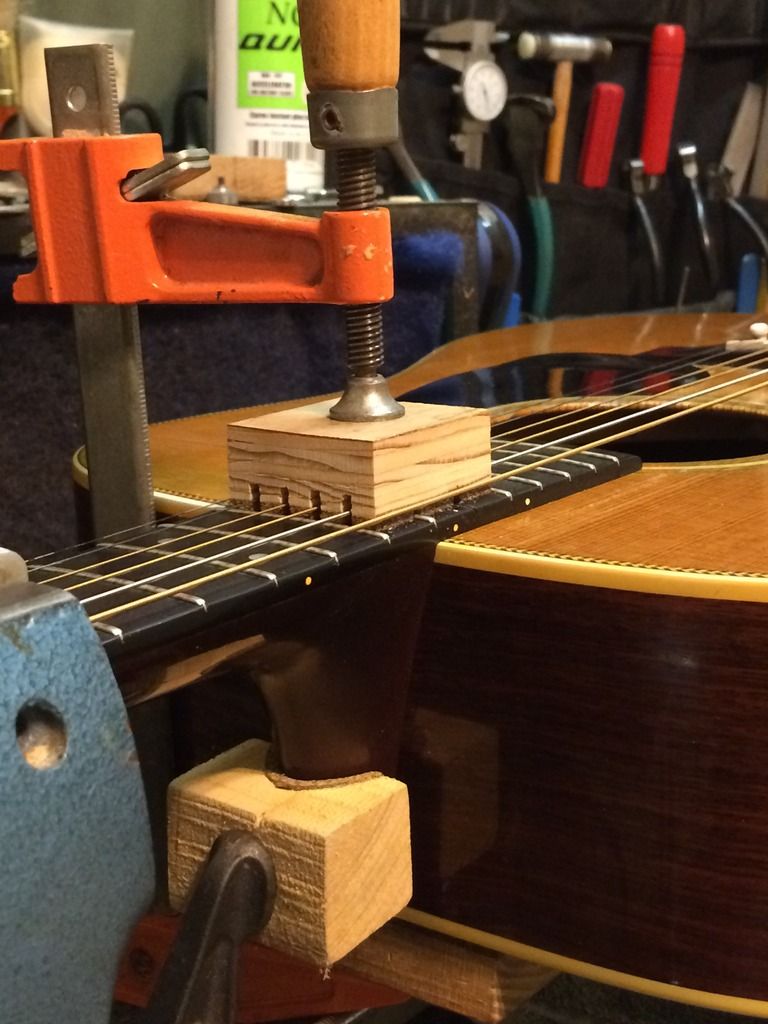
 |
|
#1
|
|||
|
|||
|
When doing a neck reset you calculate the amount of wood that needs to be removed from the neck heel to reset the neck angle.So when I remove material from the bottom of the heel ,the bottom of the dovetail will need to lowered aswell,right?So do I remove the same exact amount from the bottom of the dovetail as the bottom of the heel? I don't see anyone mentioning the bottom of the dovetail ,they onky say take the material from the bottom of the heel.So frustrated.Any help will be super appreciated.
|
|
#2
|
|||
|
|||
|
irrelevant info.....
Last edited by charles Tauber; 03-13-2017 at 07:45 AM. |
|
#3
|
|||
|
|||
|
Your question is not entirely clear.
Are you asking if you need to remove wood from the part of the dovetail which would normally have the serial number written on the neck, all endgrain and parallel to the frets, the edge closest to the soundhole? If so, there is usually about a 1/16" - 3/32" gap between the end of the tenon and the bottom of the mortise, so no wood needs to be removed from that area, unless things have gotten pretty extreme... |
|
#4
|
|||
|
|||
|
If I understand your question, most guitars have a gap between the rear of the neck dovetail and the dovetail pocket in the neck block, therefore, it's usually not necessary to decrease the depth of the dovetail. If you shave enough off of the rear of the heel to close that gap, then yes, you should take some off of the back of the dovetail.
Personally, I don't trust calculations to get a reset right. I will only commit to gluing in a neck after the results have been verified in a dry run with the guitar strung to pitch. I recommend that you devise a way for your clamping setup to work with strings on the guitar. For me, it's the only way to know for sure that it's right. There's no turning back once you glue it in (well, you can turn back, but nothing is worse than steaming apart a dovetail that you've spent hours fitting)
__________________
https://www.reverbnation.com/bootheelers |
|
#5
|
|||
|
|||
|
I never calculated the angle to remove either. It's typically a lot less than people think though. I doubt very much you will need to remove material from the bottom. I do remember doing one guitar where the back face of the male tail was flush or pretty darn close to flush against the back face of the female socket. That made removing it a PIA and I also had to remove material from the lower portion of the back tail as the new angle would make it not fit.
|
|
#6
|
|||
|
|||
|
Calculation will get very, very close to the amount you need to remove...if you make allowance for the amount of pull from string tension. The way I allow for this is to measure the action before removing the neck. The amount of action change (measured at the bridge) plus the increase in saddle height (if it is raised), is the change at the bridge I want. I use the straightedge to get a starting height at the bridge, unstrung. I then add that number to the desired amount of change to get the measurement I want after the reset. This may or may not be even with the top of the bridge. In many cases it is about 1/32" above the bridge.
On a dreadnought, the amount removed at the bottom of the heel is 1/3 the amount of change at the bridge. You need some gap between the dovetail tenon and the pocket in the neck block. That gap is what allows steam to penetrate the joint if it ever needs to be removed again. Unless the neck has been reset before, there usually is enough of a gap that no extra trimming is necessary during the reset. |
|
#7
|
|||
|
|||
|
Quote:
|
|
#8
|
|||
|
|||
|
Quote:
I simply do it the way I build them which is to shoot a straight edge along the fretboard to hover over the bridge about 1/32nd inch. It gets it right every time. |
|
#9
|
|||
|
|||
|
With a tapered dovetail, there is no need to leave a clamp on the guitar when checking the action. When the fit is right, you can squeeze the neck in with a clamp, remove the clamp, and string it up.
I once played a hospital benefit with a 1940 Regal Esquire (18" archtop, Super 400 style). The show was western swing, modeled after Red Knuckles and the Trailblazers. The neck on the Esquire was not glued in. The show went fine, and the guitar remained in tune for at least a month after the show. That was when I made time to finish the neck reset. |
|
#10
|
|||
|
|||
|
Quote:
  
__________________
https://www.reverbnation.com/bootheelers |
|
#11
|
|||
|
|||
|
Cool! I get it now.
|
|
#12
|
|||
|
|||
|
Quote:
|
|
#13
|
|||
|
|||
|
Thanks so much.I need stuff broken down for me like that.
|
|
#14
|
|||
|
|||
|
Digging those cauls man.niccccce
|
|
#15
|
|||
|
|||
|
Easiest thing to do is post your pics to some image site like Google Photos or Photo bucket then copy the URL of the image and post it into this sites editor with the image link tool (yellow icon looks like a mountain) or just hand code it by placing the image between these two tags [img] and [/img]
|